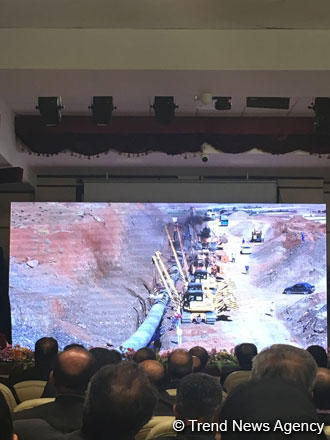Baku, Azerbaijan, Aug. 1
By Dalga Khatinoglu – Trend:
Iran has officially inaugurated a 170-km Damghan-Sari pipeline with 40 million cubic meters per day (mcm/d) of transit capacity, a source in Iran’s Oil Ministry told Trend.
Iran’s oil minister and top gas industry officials are in the event, he said, adding that the pipeline will cut dependence on Turkmen gas import in north-eastern regions.
The project is worth about $250 million. The entire amount is paid by local companies.
Turkmenistan stopped gas export to Iran in January 2017 due to Iran’s long-delayed $2 billion debt.
Iran imported about 5.86 bcm of gas from Turkmenistan during 2016, about 53 percent less than the previous year, according to an official document prepared by Iran's Oil Ministry and seen by Trend.
Iran has defined a project for building the 11th cross-country pipeline worth $4.3 billion, but it hasn’t started the construction. The capacity of the pipeline is projected to be 110 mcm/d. It is meant to transit gas from South Pars field in Persian Gulf to Iran’s northeast regions. Iran’s gas production capacity in northeast regions stands at about 14 bcm/y, about 12 bcm/y less than the demand.
Iran’s gas consumption rises in winter due to the housing sector’s increasing demand. In warm seasons, the country injects about 2 bcm/y of gas to Shourijeh and Sarajeh underground gas storage facilities, placed in northern regions, and re-extracts it during winter.
Iran plans to invest $3 billion to increase the underground gas storage capacity at five facilities from about 11.5 bcm by 2018. All of these storage facilities – Sarajeh, Shourijeh, Yurtesha, Nasrabad and Ghezel Tapeh – are in the north and northeast of Iran, according to an official document prepared by Iran’s Oil Ministry.











